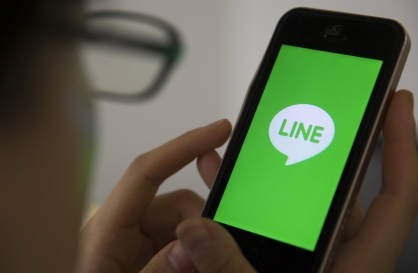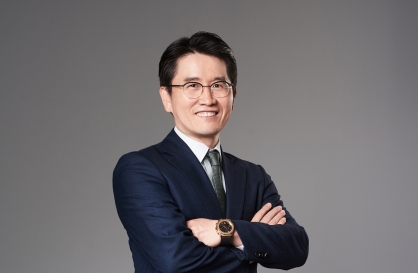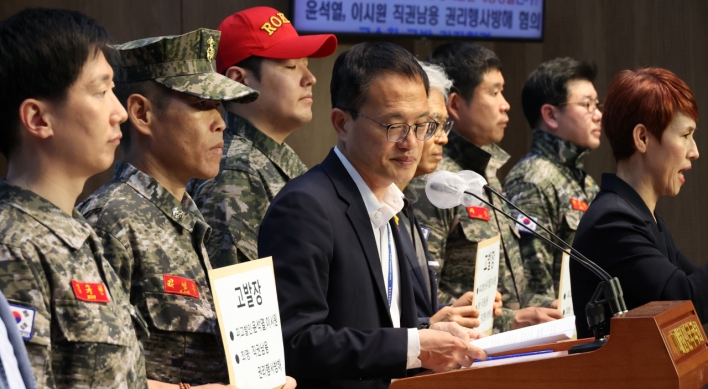
Sungnyemun, a historic gate in downtown Seoul whose restoration is near completion, was unveiled to the press on Thursday ahead its unveiling to the general public in April.
Along with the gate, parts of the Seoul City Wall, of which Sungnyemun was one of its four main gates during the Joseon Kingdom (1392-1910), were also restored to portray the original atmosphere of the gate. The National Treasure No. 1 was severely damaged on Feb. 10, 2008 in an arson attack by a mentally disturbed man in his 70s. About 90 percent of the upper floor and 10 percent of the lower floor were destroyed.
The newly restored Sungnyemun was scheduled to open in December but was delayed due to heavy snow and a cold spell that gripped the nation. The 24.7 billion won project to restore the gate originally built in 1396 as the south gate of Seoul, involved 15,000 people including scores of historians, field experts and thousands of workers working for more than 1,700 days using a total of 150,000 tons of lumber and about 3,500 tons of stone. This is the fourth time the structure has been repaired or restored, the others being in 1447, 1479 and 1961.
“The most meaningful part of the whole project was that we have managed to restore some of the original parts of the gate that weren’t available in the 1960 project,” said Kim Chan, administrator of the Cultural Heritage Administration. The gate, which was heavily damaged during the Korean War, was partially rebuilt in 1960.
A 53-meter wall to the east and 16 meters to the west of the gate, which was recorded to have been destroyed by the Japanese colonial government (1910-1945) when it built a tram rail, have been restored. The restoration team also dug the foundation about 30-50 centimeters further down, which is believed to be the level of the ground in the late Joseon period.
A total of 22,586 pieces of “giwa,” or roof tiles produced in the traditional Korean way, have been used instead of the previous factory-made ones. “Both inside and outside of the roof is built in a traditional Korean style instead of the previous one, which is assumed to have been partially influenced by the Japanese style,” Choi Jong-deok, who led the restoration project, said.
The pigments used to paint “dancheong,” or traditional decorative colorings on wooden buildings, were made with ground stones. The “Yongmaru,” or the ridge of a roof, was also extended by 90 centimeters to restore the pre-1960 appearance .
Moreover, experts have managed to find the ink-rubbing of the original signboard of the gate, believed to have been written by Prince Yangnyeong (1394-1462), and restored it. “We found the ink-rubbing at Jideoksa Temple, assumed to have been made in the late 19th century, which helped us restore the signboard,” Choi said.
Most of all, the authorities have established measures against possible accidents. Nearly all materials have been fire-proofed and surveillance cameras, alarms and sprinklers have been installed. A management kiosk will be set up next to the gate.
“Currently we are about 96 percent through the process. Around April we will wrap up and show Sungnyemun for all Koreans to enjoy,” Kim said.
By Bae Ji-sook (baejisook@heraldcorp.com)
Along with the gate, parts of the Seoul City Wall, of which Sungnyemun was one of its four main gates during the Joseon Kingdom (1392-1910), were also restored to portray the original atmosphere of the gate. The National Treasure No. 1 was severely damaged on Feb. 10, 2008 in an arson attack by a mentally disturbed man in his 70s. About 90 percent of the upper floor and 10 percent of the lower floor were destroyed.
The newly restored Sungnyemun was scheduled to open in December but was delayed due to heavy snow and a cold spell that gripped the nation. The 24.7 billion won project to restore the gate originally built in 1396 as the south gate of Seoul, involved 15,000 people including scores of historians, field experts and thousands of workers working for more than 1,700 days using a total of 150,000 tons of lumber and about 3,500 tons of stone. This is the fourth time the structure has been repaired or restored, the others being in 1447, 1479 and 1961.
“The most meaningful part of the whole project was that we have managed to restore some of the original parts of the gate that weren’t available in the 1960 project,” said Kim Chan, administrator of the Cultural Heritage Administration. The gate, which was heavily damaged during the Korean War, was partially rebuilt in 1960.
A 53-meter wall to the east and 16 meters to the west of the gate, which was recorded to have been destroyed by the Japanese colonial government (1910-1945) when it built a tram rail, have been restored. The restoration team also dug the foundation about 30-50 centimeters further down, which is believed to be the level of the ground in the late Joseon period.
A total of 22,586 pieces of “giwa,” or roof tiles produced in the traditional Korean way, have been used instead of the previous factory-made ones. “Both inside and outside of the roof is built in a traditional Korean style instead of the previous one, which is assumed to have been partially influenced by the Japanese style,” Choi Jong-deok, who led the restoration project, said.
The pigments used to paint “dancheong,” or traditional decorative colorings on wooden buildings, were made with ground stones. The “Yongmaru,” or the ridge of a roof, was also extended by 90 centimeters to restore the pre-1960 appearance .
Moreover, experts have managed to find the ink-rubbing of the original signboard of the gate, believed to have been written by Prince Yangnyeong (1394-1462), and restored it. “We found the ink-rubbing at Jideoksa Temple, assumed to have been made in the late 19th century, which helped us restore the signboard,” Choi said.
Most of all, the authorities have established measures against possible accidents. Nearly all materials have been fire-proofed and surveillance cameras, alarms and sprinklers have been installed. A management kiosk will be set up next to the gate.
“Currently we are about 96 percent through the process. Around April we will wrap up and show Sungnyemun for all Koreans to enjoy,” Kim said.
By Bae Ji-sook (baejisook@heraldcorp.com)
-
Articles by Korea Herald







![[Weekender] How DDP emerged as an icon of Seoul](http://res.heraldm.com/phpwas/restmb_idxmake.php?idx=644&simg=/content/image/2024/04/25/20240425050915_0.jpg&u=)

![[Herald Interview] Guggenheim Museum makes a push for technology-based art with LG](http://res.heraldm.com/phpwas/restmb_idxmake.php?idx=644&simg=/content/image/2024/04/26/20240426050608_0.jpg&u=20240428114717)









![[Herald Interview] Mistakes turn into blessings in street performance, director says](http://res.heraldm.com/phpwas/restmb_idxmake.php?idx=652&simg=/content/image/2024/04/28/20240428050150_0.jpg&u=20240428174656)
